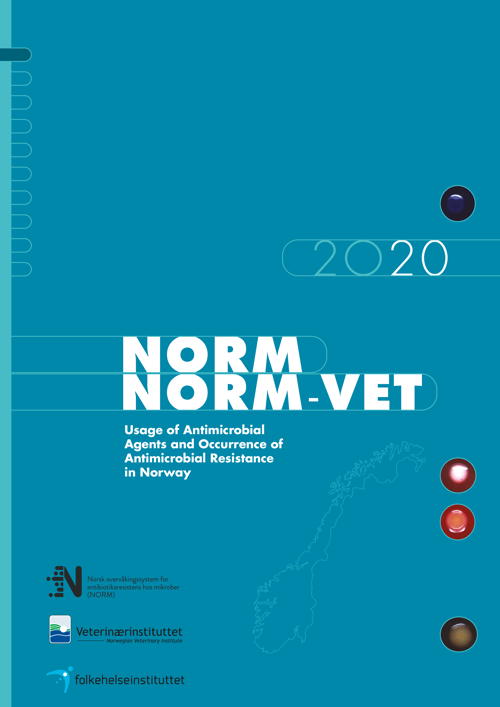NORM and NORM-VET: Usage of Antimicrobial Agents and Occurrence of Antimicrobial Resistance in Norway
Report
|Published
This report, which is the twenty-first annual joint report from NORM and NORM-VET, presents data on resistance and usage for 2020.
Key message
The NORM and NORM-VET programmes were established in order to provide and present data on the occurrence and distribution of antimicrobial resistance over time. The national action plan formally expired by the end of 2004. However, the need for continued surveillance of both resistance and antimicrobial usage was emphasised at subsequent consultations and an integrated national strategy for prevention of infections in the health service and antibiotic resistance (2008-2012) was issued in the summer of 2008. Following the renewed effort of the WHO in recent years, the Norwegian government launched a new national strategy (2015-2020) in June 2015 including an explicit target of 30% reduction in antibiotic consumption in human medicine by 2020 compared to 2012. For food-producing terrestrial animals and companion animals the target was 10% and 30% reduction in the usage, respectively, by 2020, with 2013 as reference year. Additional specific targets in the food production chain are that livestock associated MRSA will not be established in the Norwegian pig population, and that ESBL in the poultry production will be reduced to a minimum. Mapping of reservoirs of antimicrobial resistant bacteria will also be carried out in the most relevant animal populations and plants important to food safety. Due to the coronavirus pandemic, the expiry of this strategy has been postponed until 2021, but the government has initiated the process to develop a new framework for the coming years.
The NORM surveillance programme for antimicrobial resistance in human pathogens was established in 1999 and is coordinated by the Department of Microbiology and Infection Control at the University Hospital of North Norway in Tromsø. The NORM-VET monitoring programme for antimicrobial resistance in animals, food and feed was established in 2000 and is coordinated by the Norwegian Veterinary Institute commissioned by the Norwegian Food Safety Authority. The NORM/NORMVET reports also present data on the usage of antimicrobial agents in humans and animals in Norway. The NORM and NORM-VET programmes are valuable tools for setting policies, assessing risks and evaluating interventions. This report, which is the twenty-first annual joint report from NORM and NORM-VET, presents data on resistance and usage for 2020. The editors would like to thank all those who contributed to data collection and the writing of this report, for excellent work.

